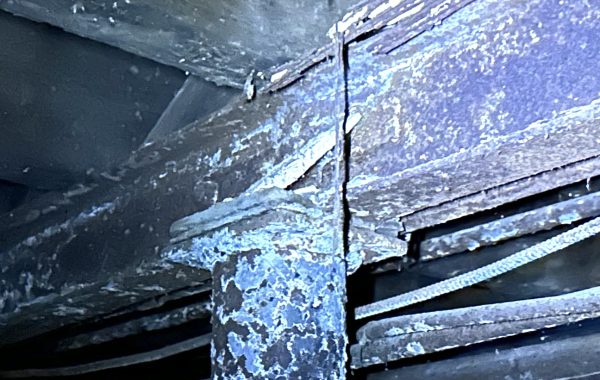Continuing yesterday’s train of thought, I want to look at an example outside of structural engineering and the world of buildings, but still within the built environment. The example is the history of redesign of trash cans for the New York City streets. (I’m talking about public cans for incidental trash, not the cans used by residences or other buildings.) To give a sense of how complicated this particular design problem is, I can’t tell you the exact number of design constraints because there is disagreement about what the parameters of the problem should be. Here are a few of them, in no particular order:
- The cans should be large, to hold a reasonable amount of trash between pick-ups by Department of Sanitation trucks.
- The cans should be small, so that they don’t block the sidewalks more than is necessary.
- The cans should not be solid, so that they don’t collect water.
- The cans should be waterproof, as the garbage juice that oozes out of them is disgusting.
- The cans should be light. The garbage is heavy enough, and DoS workers have to lift them.
- The cans should be heavy, so as to not blow over in the wind. (See design “B” below.)
- The cans should be easy to lift.
- The cans should be difficult to steal. (See design “A” below.)
- The cans should not be flammable. (See design “C” below.)
- The cans should be inexpensive.
- You get the idea…
Note the the following is not a formal history of the cans, just my memory of them over the last forty years or so. The ur-can, which I’m going to call design “A”, was a steel, open mesh design.

These cans worked fine, although they had a curious flaw: upside-down, they served well as ad hoc barbecues, and a lot of them were stolen and ended up in backyards across the metropolitan area.
The first attempt at reform addressed the theft problem by enclosing the wire baskets in big octagonal concrete boxes with steel lids. (Design “B.”) The idea was that the DoS collectors would lift the basket out of the box as simply as they had previously lifted the stand-alone baskets. Except that the enclosed basket had to be lifted straight up, with no opportunity to roll or drag it. And some trash inevitably worked its way into the space between the basket and the box. And the boxes blocked a lot of sidewalk.
The next attempt was worse: a two-piece solution that consisted of a steel frame holding a plastic basket. (Design “C”.) The plastic was flammable, and people would put cigarettes in the baskets; the basket trapped water; and the basket still had to be lifted straight up. The theft problem was solved because no one anywhere wanted those things. They did not last long.
We’ve been cruising along, garbage-wise with a slightly newer mesh can design and a variation of “B” with a steel enclosure rather than concrete (Design “D”.) The “D” enclosures have side doors, so the interior baskets can be rolled out, and the steel can be easily painted to distinguish trash from recycling.

That brings us up to the recent competition for a new, cutting-edge design. The winner is…a steel mesh basket. But a better one, that’s easier to lift and “sleeker,” whatever that means in this context.
I’m not making light of the situation: there are tens of thousands of these things and they are emptied daily or more often. Some design problems are intractable, and this one seems to be an example. Focussing on any one aspect of the problem gets you a design that is quickly abandoned, like “B” and “C.” Looking at the problem as a whole leads to two conclusions: (1) we’d be better off reducing the amount of trash at the sources, and (2) the 1930s wire mesh baskets were pretty good, which is why the competition winners resemble them.



